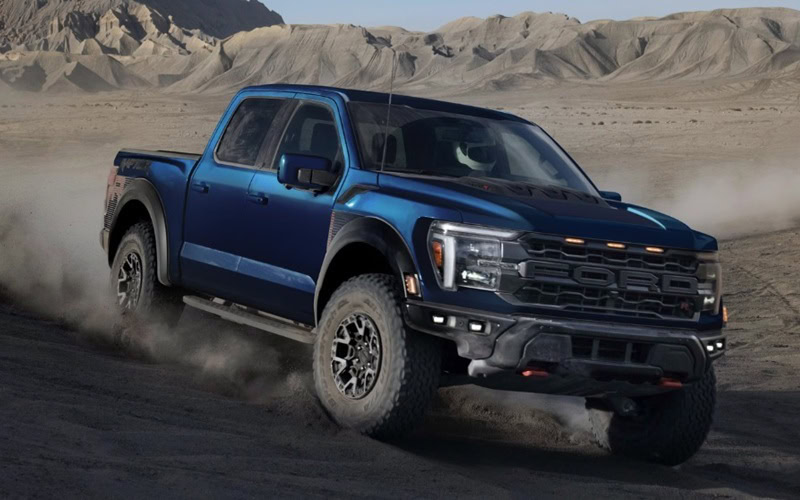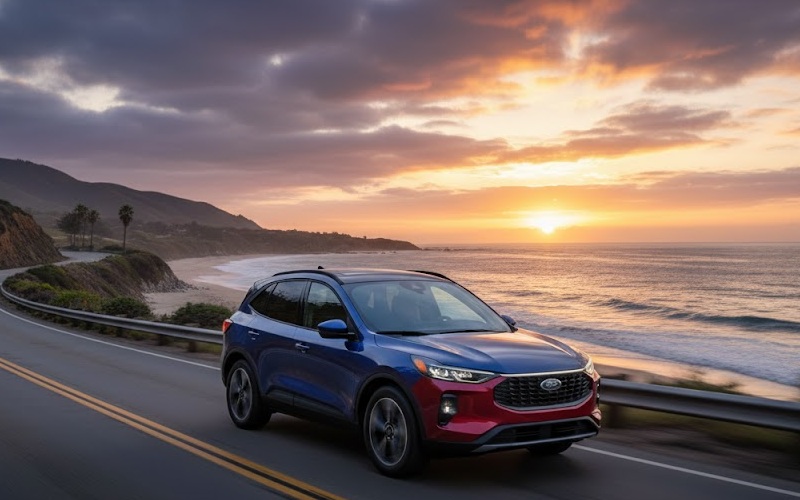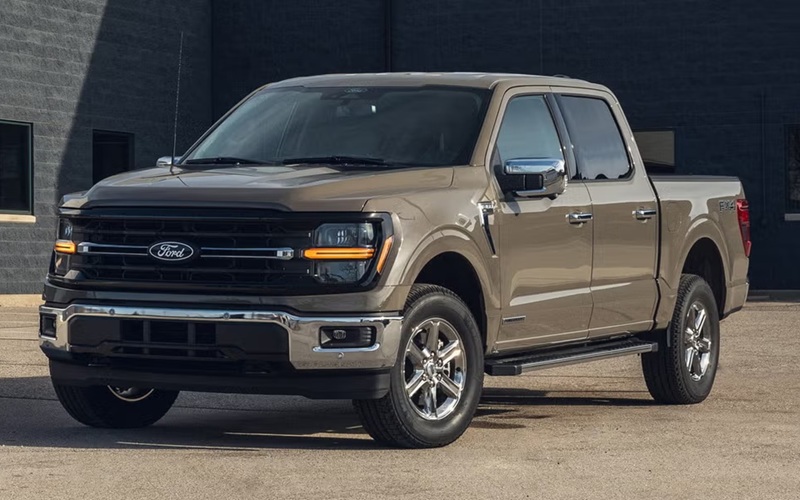The Ford F-150 stands as one of the most iconic pickup trucks ever created, with a legacy spanning decades of innovation and performance. At the heart of this legendary vehicle lies its powertrain – the engines that have defined each generation with increasing capability, efficiency, and technology. Let’s explore how Ford F-150 engines have evolved across generations, setting new standards for pickup performance with each iteration.

The Foundation: Early F-150 Engine Options
The modern F-150 journey began in the 1970s when the F-150 designation first appeared. These early models featured straightforward, robust engine options that emphasized reliability and workhorse capability:
- The 4.9L (300 cubic inch) inline-six served as the base engine, delivering approximately 115 horsepower with remarkable durability
- The 5.0L (302 cubic inch) Windsor V8 offered increased power at roughly 130 horsepower
- The 5.8L (351 cubic inch) Windsor V8 topped the range with approximately 150 horsepower
These early engines established the F-150 reputation for dependability through simple design and overbuilt components. While modest by today’s standards, these powerplants provided the torque and reliability that working truck owners demanded.
The engine architecture reflected the era – carburetion rather than fuel injection, cast iron construction for durability, and pushrods rather than overhead cams. What these engines lacked in sophistication, they more than compensated for in simplicity and ease of maintenance, with many examples surpassing 500,000 kilometres of service.
The Transition: Fuel Injection and Modernization
The mid-1980s through the 1990s marked a significant transition period for F-150 engines as Ford introduced electronic fuel injection across the lineup, dramatically improving performance, efficiency, and drivability:
- The 4.9L inline-six received electronic fuel injection, boosting output to approximately 145 horsepower
- The 5.0L V8 evolved with sequential fuel injection, reaching around 200 horsepower by the mid-1990s
- The introduction of the 4.6L Modular V8 in 1997 brought overhead cam design to the F-150, producing approximately 210 horsepower
This era saw the gradual phase-out of the venerable inline-six and Windsor V8 engines that had powered F-150s for decades. The new Modular engine family represented a complete redesign with more advanced manufacturing techniques, tighter tolerances, and improved materials.
The benefits for truck owners included more responsive acceleration, improved cold-start performance, and better fuel economy. These modernized engines also featured more sophisticated engine management systems, allowing for better diagnostic capabilities and emissions control.
The Revolution: Advanced Modular V8 Engines
The early 2000s brought further refinement to the F-150 engine lineup, with the Modular engine family expanding to offer more power and capability:
- The 4.6L Modular V8 continued with refinements, eventually offering up to 248 horsepower
- The introduction of the 5.4L Triton V8 pushed output to approximately 300 horsepower
- Three-valve per cylinder technology arrived in 2004, boosting the 5.4L to around 320 horsepower
These more sophisticated engines featured improved variable valve timing, better breathing through additional valves, and more precise fuel delivery systems. The Triton family, in particular, established itself as a capable workhorse that balanced power with reasonable fuel economy.
For truck owners, these advances translated to increased towing capacity, with properly equipped F-150s now capable of pulling up to approximately 4,500 kg. The additional power also improved everyday drivability, with more confident passing and merging even when loaded.
The EcoBoost Revolution: Turbocharged Performance
The most significant paradigm shift in F-150 engine technology arrived in 2011 with the introduction of the EcoBoost family of turbocharged engines:
- The 3.5L EcoBoost V6 debuted with approximately 365 horsepower and 570 Nm of torque
- The 2.7L EcoBoost V6 followed as a more efficient option with around 325 horsepower
- The 5.0L Coyote V8 continued as a naturally aspirated option with approximately 385 horsepower
The EcoBoost engines represented a fundamental shift in truck engine philosophy – smaller displacement engines with forced induction providing V8-like power with improved fuel efficiency. The twin-turbo design delivered exceptional torque at low RPM, precisely where truck owners need it most.
This technology allowed the V6 EcoBoost to outperform larger naturally aspirated V8s in both torque output and fuel economy. The real-world benefit was immediately apparent: stronger towing performance, better acceleration under load, and reduced fuel consumption during everyday driving.
The Modern Era: Hybrid and Advanced Technology
The latest generation of F-150 engines showcases the most diverse and technologically advanced powertrain lineup in the model’s history:
- The 3.5L PowerBoost Hybrid combines the EcoBoost V6 with electric assistance for approximately 430 horsepower and 772 Nm of torque
- The third-generation 3.5L EcoBoost offers enhanced durability and approximately 400 horsepower
- The 5.0L Coyote V8 continues with updates, producing around 400 horsepower
- The 2.7L EcoBoost remains as an efficient yet powerful option with approximately 325 horsepower
The introduction of hybrid technology marks another watershed moment for truck powertrains. The PowerBoost system not only delivers best-in-class torque but also enables unique features like Pro Power Onboard, which transforms the F-150 into a mobile generator capable of powering tools, appliances, and even worksite equipment.
Modern F-150 engines also feature advanced technologies like automatic start-stop, cylinder deactivation, and sophisticated thermal management systems to maximize efficiency without compromising performance. The result is a lineup of engines that deliver unprecedented capability while achieving better fuel economy than much less powerful trucks from previous decades.
The Legacy Continues
The evolution of Ford F-150 engines tells a story of continuous innovation spanning nearly half a century. From simple, rugged workhorses to sophisticated powerplants with hybrid assistance, each generation has pushed the boundaries of what truck engines can accomplish.
Today’s F-150 offers unprecedented choice, with options ranging from efficient turbocharged V6 engines to powerful V8s and cutting-edge hybrid technology. This diversity allows truck buyers to select the perfect powertrain for their specific needs, whether prioritizing fuel efficiency, maximum towing capability, or overall versatility.
As Ford continues to innovate, the F-150 engine lineup will undoubtedly embrace new technologies while building upon the foundation of reliability and capability that has defined the model for generations. The combination of traditional truck values with forward-thinking engineering ensures that F-150 engines will continue to set the standard for pickup performance for decades to come.
F-150 Engine Facts
- The 7.3L Godzilla V8 introduced in Super Duty trucks shares design philosophy with the original Windsor V8s, using a cam-in-block design instead of the overhead cam arrangement found in most modern Ford engines.
- The first-generation 3.5L EcoBoost V6 in the 2011 F-150 produced more torque than the 6.2L V8 available in the same model year, marking the first time a V6 outperformed the largest V8 option in Ford truck history.
- The PowerBoost Hybrid system can provide up to 7.2 kilowatts of exportable power through the Pro Power Onboard system, enough to power an entire construction site or campsite.
- The Ford 5.0L Coyote V8 features plasma-transferred wire arc cylinder liners instead of traditional cast iron sleeves, reducing weight while improving heat transfer.
- The 2.7L EcoBoost engine block is made from compacted graphite iron, the same material used in Ford diesel engines and high-performance race cars, providing exceptional strength in a compact package.
Questions and Answers
What is the most reliable F-150 engine ever made?
- Many automotive experts consider the 300 cubic inch (4.9L) inline-six used from the 1960s through the 1990s as the most reliable engine ever produced. Its simple design, understressed nature, and robust construction resulted in exceptional longevity, with many examples exceeding 500,000 kilometres without major repairs. The fuel-injected versions from the late 1980s and early 1990s offer the best combination of durability and drivability.
How does the PowerBoost Hybrid system work in the F-150?
- The PowerBoost Hybrid combines a 3.5L EcoBoost V6 with a 35 kW electric motor integrated into the 10-speed automatic transmission. A 1.5 kWh lithium-ion battery powers the electric motor, which assists the gasoline engine during acceleration and allows for brief periods of all-electric operation at low speeds. The system recovers energy through regenerative braking and uses the combined power sources to deliver 430 horsepower and 772 Nm of torque. Additionally, the system powers the Pro Power Onboard generator function, providing up to 7.2 kW of exportable power.
Which F-150 engine is best for towing heavy loads?
- For maximum towing capability, the 3.5L EcoBoost V6 and 3.5L PowerBoost Hybrid deliver the best performance. The third-generation 3.5L EcoBoost provides up to 6,350 kg of towing capacity when properly equipped, while the PowerBoost Hybrid offers slightly less at around 5,760 kg but compensates with better fuel efficiency. Both engines deliver peak torque at low RPM (around 1,600-3,000 RPM), which is ideal for moving heavy loads from a standstill and maintaining speed on inclines.
Do EcoBoost engines really deliver better fuel economy than V8s?
- Yes, EcoBoost engines typically deliver 10-20% better fuel economy than comparable V8 engines under normal driving conditions. The technology uses smaller displacement engines with turbocharging to provide power on demand while operating more efficiently during light-load situations. The 2.7L EcoBoost V6, in particular, offers an excellent balance of performance and efficiency, with fuel consumption ratings approximately 15% better than the 5.0L V8 while still providing comparable real-world performance for most driving scenarios.
What future engine technologies might appear in the F-150?
- Future engines will likely feature increased electrification, with expanded hybrid options and eventually all-electric powertrains, as demonstrated by the Lightning. Conventional engines will continue to adopt technologies like advanced cylinder deactivation, higher-pressure fuel injection, and more sophisticated turbocharging systems. We may also see more widespread use of alternative materials like carbon fiber components to reduce weight and improve efficiency. Ford has also invested in synthetic fuel research, which could eventually provide a carbon-neutral option for internal combustion engines.
*Disclaimer: Content contained in this post is for informational purposes only and may include features and options from US or international models. Please contact the dealership for more information or to confirm vehicle, feature availability.*



